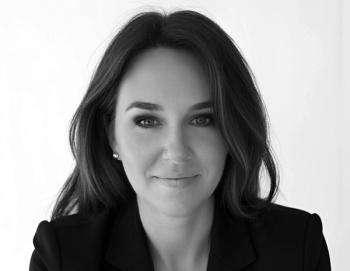
- Medical Economics December 2022
- Volume 99
- Issue 12
How to select a practice location
When it comes to picking a practice space and location, it is not as simple as geography; experts suggest that physicians need to consider demographics, income flow and even their future goals to be competitive.
Physicians just starting out or looking to get into independent practice after working as an employee have to start with the basics, and one of the most important is finding a location and setting up a practice. When it comes to picking a practice space and location, it is not as simple as geography; experts suggest that physicians need to consider demographics, income flow and even their future goals to be competitive.
Where do you want to live?
The first big question a physician should ask themself when considering a practice location, according to Louis Levitt, M.D., M.Ed., vice president/secretary of the Centers for Advanced Orthopaedics in Washington, D.C., is, “Where do you want to live, and where do you want to spend the rest of your life?” Levitt feels that “it’s very difficult to change locations once you get involved in a practice, so you should first decide where you want to live and what type of environment you want to practice in.”
Although physicians can commute, a long or difficult commute can add stress to a job that is already prone to high levels of burnout.
The type of practice determines the space
An equally important consideration for physicians is thinking about the type of practice they intend to create, according to Eric Passon, CEO and founder of Ancore Health, a Tennessee-based consulting and analytics firm that works with physician practices.
“Selecting your location could be wildly different if you’re starting up a primary care practice focused on Medicare Advantage lives or an orthopedic practice that has an ambulatory surgery center tied to the practice. You need the space to be an attractive area that is convenient for patients to attend.”
Physicians will also want to think through workflow operations and design, Passon says. “It gets more complex as you get into adding ancillary components, such as MRI, CT, a basic X-ray or a lab.”
Design with COVID-19 protocols in mind
Additionally, Passon feels that in the pandemic era, practices need to be designed with sensitivity to not have large groups of people sitting in a room. “You really have to think through the ways of designing a more elegant space that allows for patients to enter and exit without sitting in the traditional waiting room. So how do you build the practice in such a way that it’s conducive to clinical workflows but still allows for that type of experience?”
Create convenience for your patient population
Finding a practice location is more than just thinking about what part of town you want to work in, Passon insists. It’s important to be near the patient population the practice is serving. Being convenient to the patient is a way of being competitive, Passon urges. “The actual space would need to be convenient, whether you’re moving into an existing space or you’re building out a new space from that perspective.”
If the physician offers any services that are performed at nearby hospitals, then proximity to those hospitals can also further offer the convenience that will keep a practice competitive, Passon says.
One of the often-overlooked aspects of convenience is parking, says Mark Leondires, M.D., medical director at Illume Fertility, in Norwalk, Connecticut. Parking can be hard to come by in a rental. “The lesson I’ve learned is always consider parking. Landlords are notoriously stingy (about) giving you assigned parking spaces, but if you can get them for your patients, it gives you considerable cache when it makes it easier for them to get in and out.”
Do market research on other doctors
Being the new doctor in town might seem promising to a physician setting out on their own, but if there are other physicians in town, a new one could merely be saturating a region. It is important to distinguish oneself.
Leondires says, “It’s really good to have good market research regarding the other physicians in the area that are offering the same services, and also that the demographics of the population support it.”
He urges physicians to ask themselves, “What competitive advantage do you offer?” There may be specific advantages, such as being a woman opening an obstetrician-gynecologist (ob-gyn) practice in an area with only male ob-gyns, or being multilingual. It might make sense to open a practice in a more rural area where there is less competition.
“Make sure you have a very good team that’s committed to your success, from an accountant to a real estate professional to a lawyer, and good market analytics to understand where your needs are and help you succeed,” Leondires says.
Furthermore, he points out that if a physician is leaving a hospital or a group practice to start up an independent one, there may be noncompete clauses in a contract that can shape the location, so pay attention to those.
On buying and build-outs
Although most physician practices will probably rent, at least in the beginning, most locations won’t be perfectly set up to accommodate a practice, Leondires says. This may require a build-out, and not every landlord is amenable to having their space redesigned and remodeled, so that will be an important conversation to have. Additionally, build-outs can cost a lot of money.
The alternative to renting is to buy a property, which Leondires calls a big commitment, especially for someone who may still be building up a patient base. “The time to buy office space is when you know you have a dedicated patient population so you have a viable practice for the next twenty years, because that’s probably how long you’ll end up with a mortgage.”
The downside of buying a building is that you become less portable, he says. “Let’s say you open a practice in this part of town and it should have been in that part of town, and then you’re stuck. So you want the flexibility to adjust your location.”
Other financial considerations
Leaving a place of employment to set out on your own may feel exciting, but Leondires urges a little bit of caution and deep planning around the financial output of such a venture, with the knowledge that rent and employees will be the two most significant expenses. According to
“If you’re trying to open your own practice, you have to recognize that there may be at least one, if not two years, that you’re not making any money,” Leondires says. “Make sure you have the financial bandwidth to tolerate that because it takes time for patients to switch doctors, to get on insurance plans, and for existing physicians to change referral patterns.”
Passon recommends having at least six months’ worth of expenses in savings before setting out to rent or buy office space.
There are also all the other costs associated with maintaining the technology of an electronic health record and a practice management system that may also be able to offer secure telehealth, Passon added. There may also be employee costs if a physician hires administrative staff, a practice manager, and billing staff.
Private practice may be disappearing
Before worrying about practice location, Levitt adds that it is worth considering that “private practice is disappearing. Ten years ago, 75% of doctors were in private practice and 25% were employed. In ten years, there’s been a flip of that statistic.”
It’s far more common for physicians to enter group practices, where they can share expenses, overhead and even workload. However, if the circumstances are right to open an independent practice, Levitt urges physicians to “Do your due diligence. Make yourselves knowledgeable about the world of business.”
Wondering which states are ranked the best for a medical practice? Check out the
Articles in this issue
almost 3 years ago
Physician estate planning guidealmost 3 years ago
Five Signs the Market May Be Heading for a Sustained Uptrendalmost 3 years ago
Fallout from the FTX bankruptcy and the future of cryptoalmost 3 years ago
Who will provide primary care?almost 3 years ago
Seven ways to ease patient collections in your medical practicealmost 3 years ago
Why Richard Nixon’s ghost is haunting CMSalmost 3 years ago
How physician documentation can combat the opioid crisisabout 3 years ago
Why improving communication can reduce physician burnoutabout 3 years ago
Fixing medical care: The pride of ownershipNewsletter
Stay informed and empowered with Medical Economics enewsletter, delivering expert insights, financial strategies, practice management tips and technology trends — tailored for today’s physicians.


















